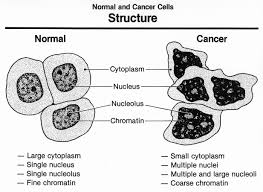To begin this reflection, let us first discuss the results of my VARK questionnaire. I had a visual score of 4, an aural score of 14, a reading/writing score of 12, and a kinesthetic score of 4. I actually expected the high scores in the reading/writing and aural categories, as from past experience, I have found these to be most effective for me. For every test I have ever taken, I make a handwritten study guide. I cannot learn from typed study guides. Writing the words and seeing the words on the paper, as well as forming the actual words in my mind during this allows me to sort and process information. When I was in a play, the only way I was able to learn my lines was to practice reading them aloud over and over again, and I had over 300 lines that I needed to memorize. In contrast, my father is a very visual and kinesthetic learner, who hates reading words on account of his dyslexia. He can take apart and rebuild a computer without looking at the directions and relying just on his intuition of how things function, whereas if you presented me with the same task, I would need someone standing over my shoulder telling me where everything needs to go to avoid a mental breakdown from my inevitable frustration. My solution to solving Rubix cubes is to peel off the stickers and color code them myself; if something doesn't involve words, I peace out.
But I digress.
In this unit, we focused on the body's defense. Externally, our body has a first line of defense: the skin, which serves as a physical barrier against pathogens. Comprised of the epidermis, dermis, and hypodermis layers (outermost to innermost layers), the skin also uses chemical methods of preventing pathogens, such as secreting sweat, mucus, and its levels of keratin to resist bacterial enzymes. These forms of resistance are called non-specific. Other forms of non-specific resistance are other chemical methods inside the body like gastric juice, anti-microbial substances like natural killer cells, and anti-microbial processes like inflammation and fever. Other forms of resistance used by the body to defend against pathogens are called specific. These are cell-mediated or antibody-mediated responses that occur when the first layers of defense have been penetrated. Cell-mediated immunity uses T-cells, which can be either Helper T-cells, Cytotoxic T-cells, or Memory T-cells. B-cells make up the antibody-mediated immunity, developing into plasma cells and using neutralization, immobilization, agglutination, activation of complement, attraction of phagocytes, or phagocytosis enhancement to stop the threat. Generally, our bodies immune system kills "bad" cells like cancer cells in under 100 seconds (McCarthy). Sometimes, they don't neutralize the cancer cells, which then grow into tumors, masses of extra tissue. Cancer is the uncontrolled growth or body cells that crowd out normal cells. Some tumors are non-cancerous or benign, but cancerous, or malignant, tumors cause death if untreated. If uncontrolled, cancer cells will spread across the body in a process called metastasis. Cancer treatments include chemotherapy, removal surgery, and radiation.
This unit, we had the interesting opportunity to participate in a debate. The debate was informative and fun, albeit stressful. Our topic, the organ market, was unique because both sides were debatable and strong. I honestly wasn't leaning one way or the other on the topic, and I was very surprised how the audience was so staggered. My team worked very hard, and I was so proud of our efforts.
Works Cited
http://preventdisease.com/news/14/020314_Scientists-Find-That-The-Human-Body-Kills-Spontaneous-Cancers-Daily.shtml
https://upload.wikimedia.org/wikipedia/commons/5/5d/Anatomy_The_Skin_-_NCI_Visuals_Online.jpg
https://en.wikipedia.org/wiki/Cancer_cell

